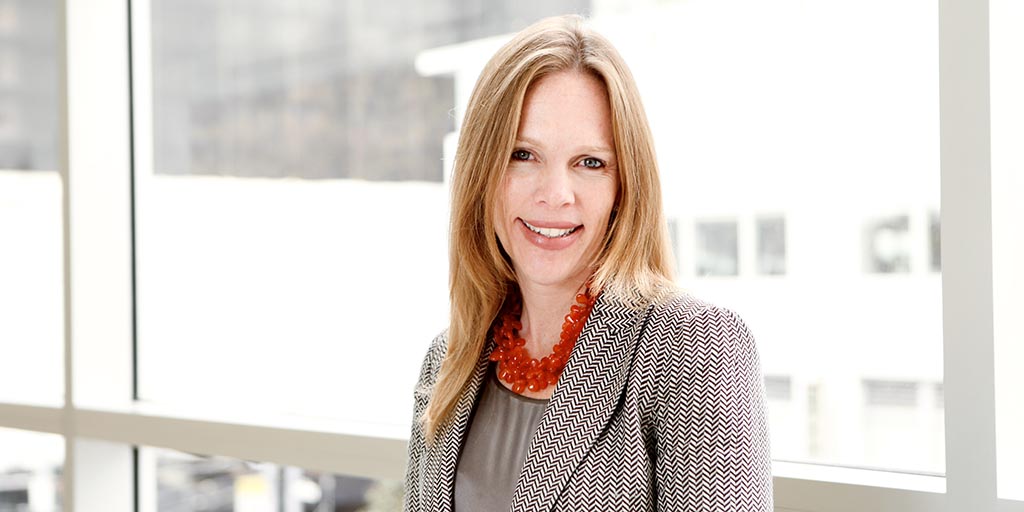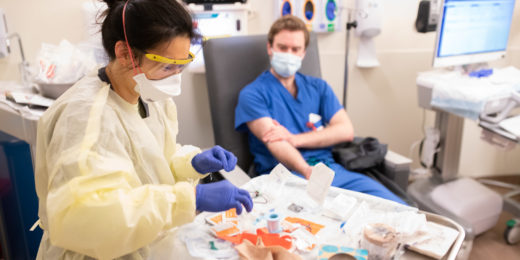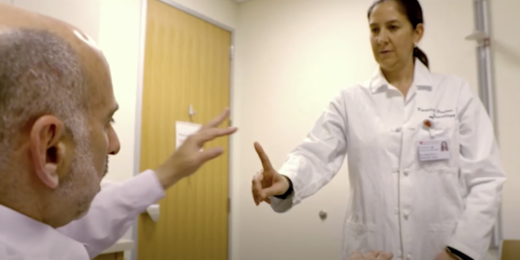When I asked Stanford Health Care executive Catherine Krna if her Harvard MBA had prepared her for anything like a pandemic, she said she has reflected on that a lot since the COVID-19 outbreak began.
One class, the Power of Influence, stands out, she said: "I was thinking through the challenges that various leaders -- including Robert Moses, Margaret Thatcher, Martin Luther King -- faced and what helped them through a crisis, and it came down to two things: resilience and experience."
Krna, the chief administrative officer for the University Healthcare Alliance and vice president of ambulatory care for Stanford Health Care, has a lot of experience in health care. She told me that her resilience has been tested during the pandemic.
As Stanford Medicine resumed elective surgeries and routine care in the past few weeks, I spoke with her for a 1:2:1 podcast about fundamental changes to health care -- namely how televisits will expand.
This Q&A is edited and condensed from our conversation.
The world stopped in mid-March when stay-home orders were issued to stem the spread of the coronavirus. What's the ensuing time been like for you?
It's been both horrifying and inspirational. Meeting the personal needs of my family, along with what were turbocharged professional needs of Stanford Medicine, made the initial days of COVID a very harrowing time. But it's also been inspirational, as I observed my colleagues stepping up and asking, "What can I do to help?"
Over the course of a 48-hour time period, our ambulatory team -- in partnership with our information technology team working 24/7 -- built a video visit platform. We were able to continue patient care, with physicians seeing patients through televisits.
After weeks of intense telemedicine, what does the landscape look like now?
When COVID happened, 2% of all of our visits were via video. The week of May 4, 65% of our total visits were video-enabled. I still think we have a way to go to advance it, but we're looking at it as a positive opportunity to embrace a different business model going forward.
The question before COVID-19 was, "Why does this need to be a video visit?" The question now is, "Why does this need to be an in-patient or in-person interaction?" We should bring patients in only when it is of value to the patient.
How have patients responded to televisits?
We've heard very positive comments from patients grateful to be able to interact with physicians. Patients, even during this period, are giving us high marks for patient experience. I don't see any reason why 50% -- if not more -- of our visits going forward could be very clinically appropriate via a video visit.
What have you learned about Stanford Medicine and your colleagues through all of this?
I think all of us get very emotional when we look at our clinical staff, asking, time and time again, first and foremost, how they can help patients. It wouldn't have been possible to have gotten through this first chapter in the way that we have without resilience and selflessness.
If I were to ask your kids to tell me about their mom in the past several weeks, what would they say?
I'm not fully thrilled with my ability to have balanced work and family effectively, but I do think my family understands. They are very forgiving and understanding that mom is supporting important work.
One of the things we did is to create an app that enables first responders and essential workers to streamline testing. My children came with me one weekend -- we were all masked up -- to pass out flyers for awareness. They were initially embarrassed. It was like, "Mom, please. You're bringing work home on the weekends, and you're going and you're talking to all of these people that you don't know." When they saw the appreciation of these individuals, it helped instill an appreciation for what this is all about.
Listen to more 1:2:1 podcasts on COVID-19 from Paul Costello at https://soundcloud.com/stanfordmed/sets/covid-19
Photo courtesy of Stanford Health Care






